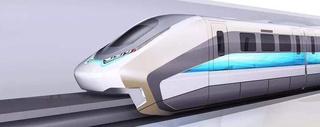Incheon Airport Maglev
The first commercial maglev line in South Korea is the success of a three-decades-long development project. The initial idea for using magnetic levitation in public transportation popped up in the 80s, with the first vehicles, the HML-01, and HML-02 ready to be tested in 1986. The South Korean public could first try this futuristic train at the Expo '93 in Daejeon. Incheon Airport Maglev was planned a decade later with the construction starting in 2010 and started commercial service in 2016. Ecobee, the domestically developed maglev train, is the co-work of the Korea University of Science and Technology and Hyundai Rotem. This airport maglev line is stretching over 6.1 km (3.8 mi) with six stations and an operating speed of 110 km/h (68 mph). An extra two stages are planned in the future to create a circular line. The first will add 9.7 km (6 mi) and the second another 37.4 km (23.2 mi).

Development History
1986 - Start of the urban maglev train development project
1986 - Completion of the HML-01 and HML-02 test vehicle development
1989 - Ministry of Education, Science, and Technology national project of the UTM-01
1993 - HML-03, EXPO 93' in Daejeon with fully operational maglev train, the HML-03, that operated for three months and carried 120,000 passengers
1997 - Completion of a 1.3 km (0.8 mi) long test track by the Korea Institute of Machinery and Materials
2003 - UTM-02, an unmanned automatic driving system trialed at the Daejeon Central Science Museum
2005 - Preliminary Feasibility Study of the Incheon Airport Maglev
2006 - Feasibility study by the Ministry of Construction and Transportation
2007 - Agreement between the National Land Promotion Agency, Incheon Metropolitan City, and the Incheon International Airport Corporation for the airport maglev
2009 - Incheon International Airport pilot route design
2010 - Test route construction
2012 to 2016 - Construction

Stations
M01 Incheon International Airport Terminal 1
M02 Long Term Parking
M03 Administration Complex
M04 Paradise City
M05 Water Park
M06 Yongyu





